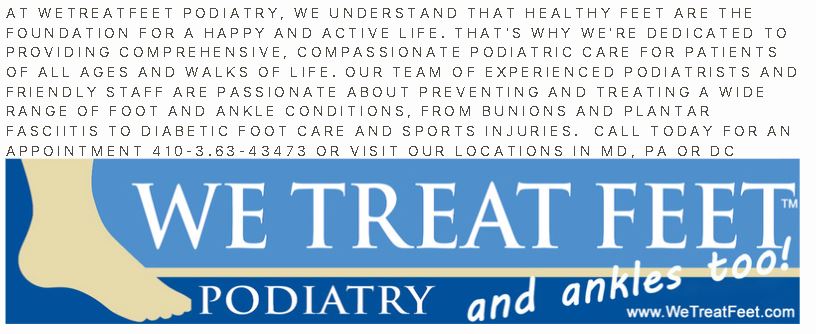Heel pain can be a common ailment caused by various factors such as plantar fasciitis, Achilles tendonitis, or heel spurs. In this blog post, we will delve into the world of orthotics and their role in relieving heel pain. Specifically designed shoe inserts, orthotics can help alleviate this discomfort. We will provide a comprehensive guide on how orthotics work, the different types available in the market, and their specific benefits for heel pain relief.
What are orthotics?
Orthotics are shoe inserts that are designed to provide support, cushioning, and realigning the foot’s structure to reduce stress on the affected area. They can be made from various materials and come in different shapes and sizes, depending on the specific needs of the individual. Orthotics can be prescribed by a podiatrist or orthopedic specialist, or purchased over-the-counter.
Types of orthotics
There are three main types of orthotics:
- Rigid orthotics: These are typically made from hard materials such as plastic or carbon fiber. They are designed to control the motion of the foot and provide stability for conditions such as overpronation.
- Soft orthotics: These are made from cushioning materials to provide shock absorption and pressure relief. They are suitable for individuals with conditions such as plantar fasciitis or diabetic foot ulcers.
- Semi-rigid orthotics: These combine elements of both rigid and soft orthotics. They offer a balance of support and cushioning and are often prescribed for conditions like Achilles tendonitis.
Causes of heel pain
Heel pain can be caused by various factors, including:
- Plantar fasciitis: This is the most common cause of heel pain. It occurs when the plantar fascia, a ligament that runs along the bottom of the foot, becomes inflamed or irritated.
- Achilles tendinitis: This condition involves inflammation of the Achilles tendon, which connects the calf muscles to the heel bone.
- Heel spurs: These are bony growths that develop on the heel bone and can cause pain and discomfort.
- Other possible causes: Other conditions that can contribute to heel pain include stress fractures, nerve impingement, or arthritis.
How orthotics help with heel pain
Orthotics can help alleviate heel pain by:
- Providing arch support: Orthotics with arch support can help distribute weight evenly across the foot and reduce strain on the heel.
- Distributing pressure evenly: By providing cushioning and support, orthotics help distribute pressure more evenly throughout the foot, reducing the impact on the heel.
- Improving foot alignment: Orthotics can help correct any structural imbalances in the foot, improving overall foot alignment and reducing stress on the heel.
- Reducing stress on the heel: Orthotics can absorb shock and reduce the amount of stress placed on the heel during activities such as walking or running.
Getting fitted for orthotics
To ensure maximum effectiveness, it is important to get properly fitted for orthotics. This is especially true for custom-made orthotics, which are specifically designed for an individual’s unique foot structure and condition. A podiatrist or orthopedic specialist can perform a thorough evaluation of the foot and recommend the appropriate type and size of orthotics.
Choosing the right orthotics for heel pain
When choosing orthotics for heel pain, it is essential to consider factors such as the type and severity of the condition, the individual’s foot shape and size, and the type of footwear to be worn with the orthotics. It is advisable to seek professional advice and guidance from a podiatrist or orthopedic specialist to ensure the right orthotics are selected.
Other treatments for heel pain
In addition to orthotics, there are other treatments that can help alleviate heel pain:
- Stretching exercises: Performing specific stretching exercises for the calves, Achilles tendon, and plantar fascia can help relieve tension and promote healing.
- Icing and rest: Applying ice to the affected area and taking regular rest breaks can help reduce inflammation and provide relief.
- Physical therapy: A physical therapist can provide specialized exercises and treatments to address specific causes of heel pain.
- Medications: Over-the-counter or prescription medications, such as nonsteroidal anti-inflammatory drugs (NSAIDs), may be recommended to reduce pain and inflammation.
Tips for using orthotics effectively
To ensure the effectiveness of orthotics, it is important to follow these tips:
- Wear orthotics consistently: It is important to wear orthotics as instructed by a healthcare professional, whether it is during specific activities or throughout the day.
- Gradually increase usage: If orthotics are new or have been adjusted, it is advisable to gradually increase usage to allow the feet to adjust to the changes.
- Maintain proper hygiene: Keep orthotics clean and dry to prevent bacterial or fungal infections.
- Replace when necessary: Orthotics may need to be replaced periodically, as they can wear out over time and lose their effectiveness.
Potential side effects and risks
While orthotics are generally safe to use, there can be potential side effects or risks. These may include:
- Discomfort or pain: It is not uncommon to experience some initial discomfort or pain when using orthotics, especially if they are new or have been adjusted.
- Pressure points: Improperly fitted orthotics can create pressure points or cause blisters, sores, or calluses.
- Dependency: Some individuals may become dependent on orthotics and experience discomfort when not wearing them. This can be addressed through proper foot strengthening exercises and gradually reducing reliance on orthotics.
Conclusion
Orthotics can be an effective solution for alleviating heel pain caused by conditions such as plantar fasciitis, Achilles tendonitis, or heel spurs. By providing support, cushioning, and realigning the foot’s structure, orthotics can reduce stress on the affected area and promote healing. It is important to seek professional advice to ensure the right orthotics are chosen and properly fitted. Combining orthotics with other treatments and proper foot care can maximize the benefits and help individuals find relief from heel pain.





